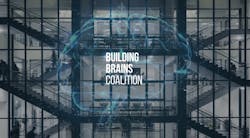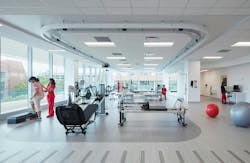Designing for brain health now has an advocacy group
At least one in five American adults experiences some form of mental illness each year, and one in 20 suffers from serious episodes, according to the Centers for Disease Control and Prevention, and the National Alliance on Mental Illness. Children and young adults are more commonly being diagnosed with mental health disorders like depression.
It is now generally accepted that interior space impacts brain health in positive and negative ways, depending on the thoughtfulness of its design. “Understanding how our brains perceive space on a neuropsychological level allows designers to create environments that not only look good but also feel good,” observed Charrisse Johnston, FASID, LEED AP BD+C, WELL AP Assoc, AIA, President and cofounder or of studioSALT in South Africa, in an essay she posted last summer on the American Society of Interior Designers’ website.
The built environment “plays a pivotal role in advancing brain capital,” wrote Debbie Beck, MPA, FACHA, Principal-Advisory Services; and Hala El Khorazaty, Senior Interior Designer, for Perkins&Will. “By prioritizing brain-positive design in our buildings and urban planning, we can create environments that drive economic growth, build a resilient economy, and help individuals reach their full potential.”
P&W is one of the partners in the recently-launched Building Brains Coalition, which serves as a bridge connecting built environment professionals with neuroscience, psychology, climate science, and public health, to design for resilience, wellness, and cognitive health. The Coalition’s founders include the design firm HKS, Rice University’s Baker Institute Neuroscience Policy Program, the Center for Advanced Design Research and Evaluation, the Center for BrainHealth, and the Brain Capital Alliance.
The Coalition’s 33 member-companies (as of mid-February) run the gamut, from the design firm Corgan to the office furniture supplier Steelcase, the San Antonio Spurs NBA team, the city of Dallas, homebuilders, the International WELL Building Institute, universities, healthcare networks, foundations, and local chapters of Urban Land Institute and USGBC.
In addition to the five founder organizations, the Building Brains Coalition is strengthened by the involvement of the Academy of Neurosciences for Architecture (ANFA), Brain Health ACTION (an AARP collaborative), Euro-Mediterranean Economists Association (EMEA), International Interior Design Association (IIDA), and Simtigrate Lab at Georgia Tech.
The Coalition was launched from Dallas, a regional nexus for progress related to brain health and capital within the built environment. Big D hosted last year’s Building Brains Summit, whose closing keynote speaker—Dr. Edward B. Burger, President and CEO of St. David’s Foundation, which supports health equity in five counties surrounding Austin—summed up the event by stating “We can change how we feel and think by what surrounds us.” He spoke about designing environments to alter and enhance human experiences through design that encourages “inner-life experiences.”
Aligned with other orgs’ goals
The global economy relies increasingly on brain-based skills, creativity, and emotional intelligence, said Upail Nanda, HKS’s Global Sector Director of Innovation, in a prepared statement. By focusing on brain health, “we can create environments that enhance cognitive flexibility, emotional resilience, and collective intelligence—key drivers of innovation and societal well-being.”
The Coalition’s partnership notes that its vision aligns with priorities of the World Health Organization, AARP, the World Economic Forum, and the United Nations Sustainable Development Goals.
In their November 2024 white paper on designing for brain health, Beck and El Khorazaty of Perkins&Will single out as examples a few of the firm’s recent projects. The 194,000-sf University of Cincinnati Gardner Neuroscience Institute, completed in 2019, is designed to support advanced neurological care, promote wellbeing, and set a benchmark for future healthcare environments. The design accommodates the needs of patients with susceptibility to nausea, dizziness, fatigue, or movement disorders.


